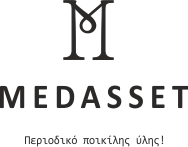This features a dragon on the obverse and the reverse features the China Millennium monument (at the Center for Cultural and Scientific Fairs). In 1999, a commemorative red ¥50 note was issued in honour of the 50th anniversary of the establishment of the People’s Republic of China. This note features Chinese Communist Party chairman Mao Zedong on the fxcm canada review front and various animals on the back. Once you’ve got your renminbi in hand, be sure to take some time to examine it and think about its history, its future and all the different ways there are to refer to it in both English and Chinese. If you are traveling to China for the first time, you might be wondering whether or not to bring any cash.
- In August 2019, the U.S. designated China as a “currency manipulator.” According to the U.S.
- Issuance of the aluminium ¥0.01 and ¥0.02 coins ceased in 1991, with that of the ¥0.05 halting in 1994.
- Banknote printing facilities are based in Beijing, Shanghai, Chengdu, Xi’an, Shijiazhuang, and Nanchang.
- These, known as “gold yuan notes”, circulated as normal currency in the 1940s alongside the yuan.
It is even possible to spend an entire day paying for everything with a smartphone instead of cash. Even the owners of small vegetable stalls in traditional wet markets accept mobile payments. If you look closely at a 1 yuan banknote, however, you will see the characters 壹圆 (yī yuán) under the “1” in the middle to the left of Mao’s portrait. Although they look quite different, the characters 壹圆 (yī yuán) are actually the same as 一元 (yī yuán). Unfortunately, however, neither the word “yuan” nor the word “renminbi” is commonly used in China. Instead, most people in China refer to their money as “kuài” (块).
Transition to an equilibrium exchange rate
As China became one of the world’s preeminent centres of finance and trade in the early 21st century, the renminbi rose as a global currency. In recognition of the renminbi’s elevated status, in November 2015 the International Monetary Fund (IMF) announced activtrades review that the renminbi was to become one of its reserve currencies. Thus, it would join the U.S. dollar, the euro, the British pound sterling, and the Japanese yen as one of the IMF’s Special Drawing Rights currencies used for intergovernmental loans.
How Can I Invest in Chinese Currency?
Countries with low currency values export more because their products cost less than their competitors’ products. If the dollar rises too far above the peg, the bank will sell Treasurys on the secondary market. The official name for Chinese currency is Renminbi, which literally translates to People’s Currency and is abbreviated to RMB. The most widespread international usage is yuan, which is abbreviated to CNY. The word they use is “kuai”, which literally means “piece”, and is the word used historically for coins made of silver or copper.
Use as a currency outside mainland China
Compare live Chinese yuan exchange rates and see how much you could save with Wise. Get your Wise travel money card online for free, to send and spend money around the world at the mid-market exchange rate. The Wise Chinese yuan travel money card lets you top up in your local currency, and switch to yuan to spend when you’re in China. You’ll get the best rate bitfinex review for spending in Chinese yuan – and can also hold and spend 40+ other currencies with the same card. You’ll find Chinese banknotes in denominations of 1, 2, 5, 10, 20, 40 and 100 yuan and 1, 2 and 5 jiao. During the period of a controlled economy, the Chinese Yuan Renminbi was pegged to unrealistic exchange values, leading to stringent currency regulations.
Yuan vs. Renminbi: What’s the Difference?
Banknotes of the yuan suffered from hyperinflation following the Second World War and were replaced in August 1948 by notes denominated in gold yuan, worth 3 million old yuan. There was no link between the gold yuan and gold metal or coins and this yuan also suffered from hyperinflation. CNY is the official currency abbreviation for the Chinese Yuan under the ISO 4217 standard. In addition, due to China’s cross-border currency controls, the Chinese Yuan may trade for a different price in offshore markets, such as Hong Kong. In order to distinguish between these two prices, the unofficial abbreviation CNH is sometimes used to refer to the offshore price of the Chinese Yuan.
You may also like
-
Czy Żabka jest otwarta w Wielkanoc i Poniedziałek Wielkanocny? Sprawdź, czy zrobisz zakupy w Żabce w Lublinie 31 marca i 1 kwietnia Lublin, ESKA pl
-
Nasdaq 100 Index: What It Is, How It’s Weighted and Traded
-
1 Little-Known Vanguard Index Fund to Buy Before It Soars 50%, According to a Wall Street Analyst The Motley Fool
-
Форекс статьи Swap-free счета или исламские счета
-
Whats the difference between Chinas yuan and renminbi? South China Morning Post
